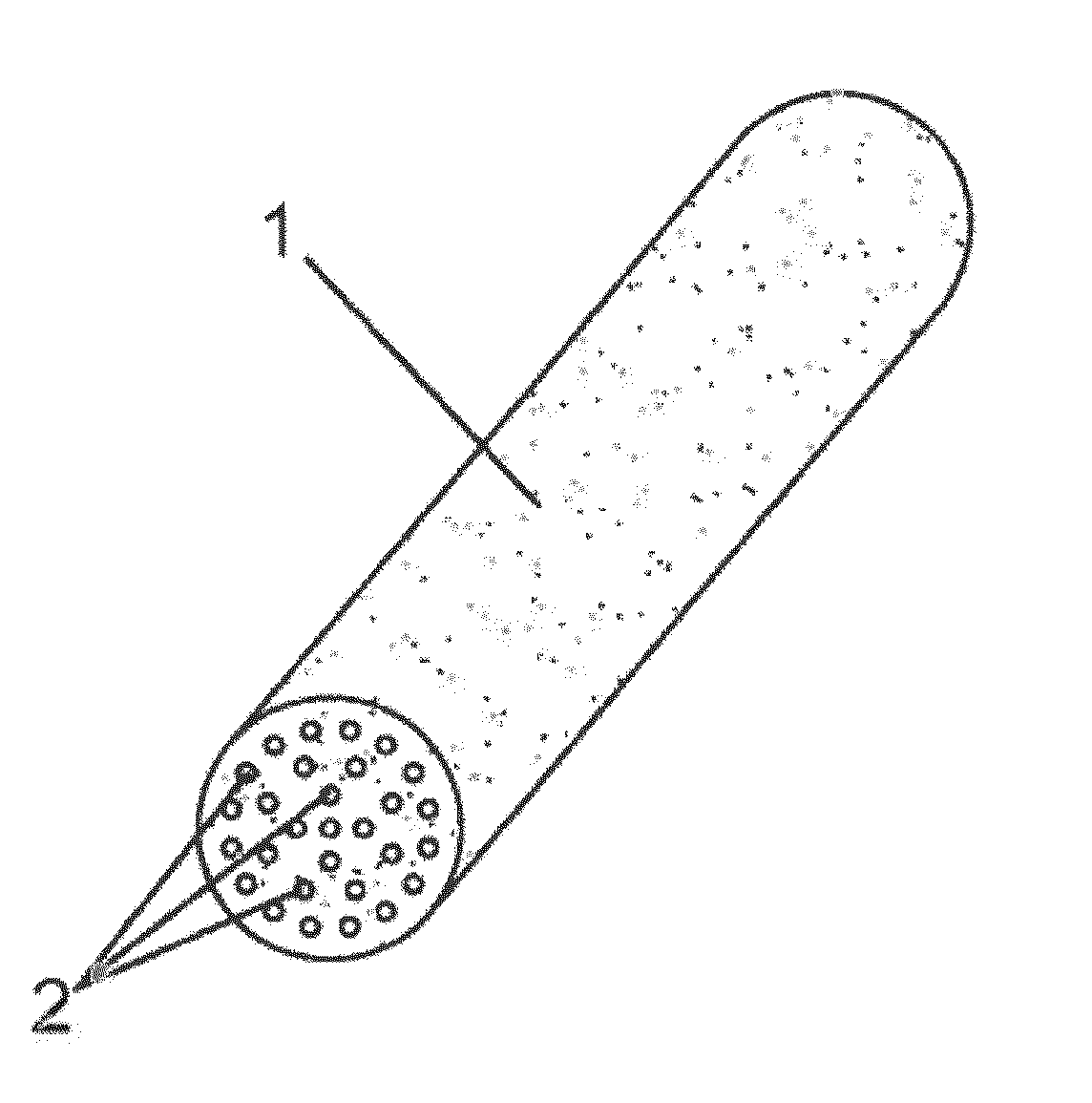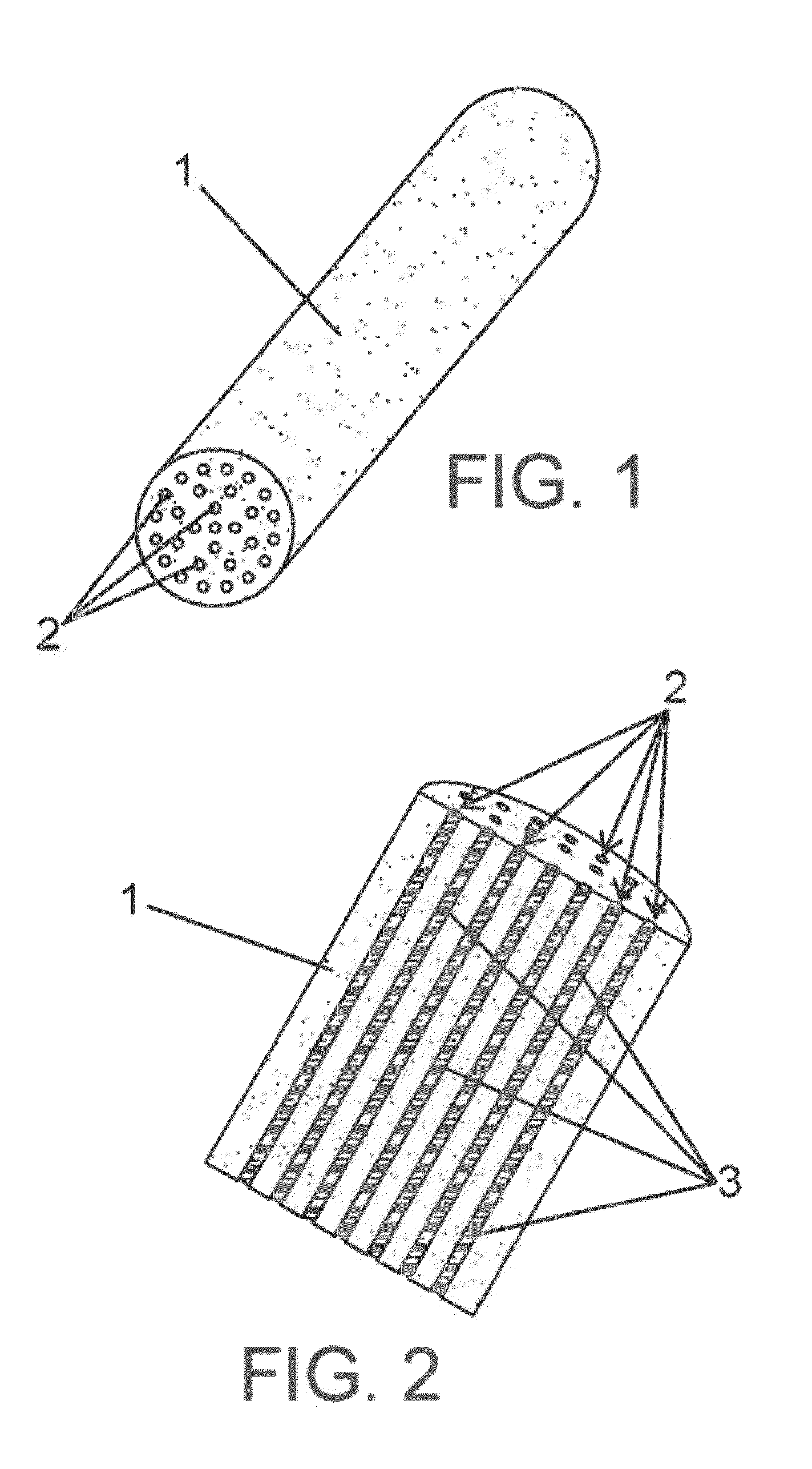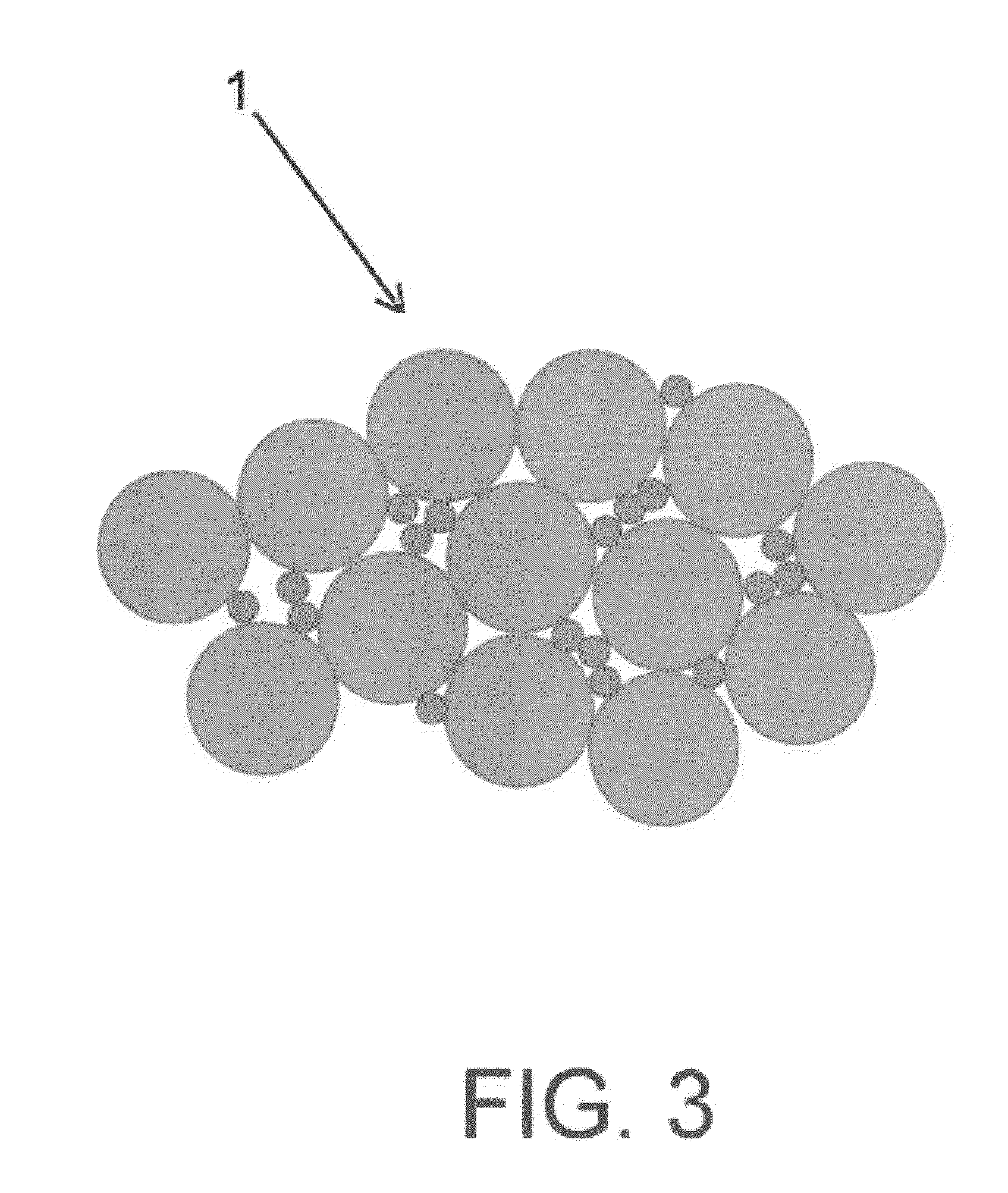Ceramic filtration membrane
a filtration membrane and ceramic technology, applied in gravity filters, filtering materials loosening, separation processes, etc., can solve the problems of sintering temperature negatively affecting the manufacturing cost of filtration membranes, microfiltration ceramic layers having pore sizes greater than 50 nm, and high oven cost, etc., to achieve low manufacturing cost, high filtration efficiency, and high filtration efficiency
- Summary
- Abstract
- Description
- Claims
- Application Information
AI Technical Summary
Benefits of technology
Problems solved by technology
Method used
Image
Examples
Embodiment Construction
[0029]FIGS. 1 and 2 show a possible embodiment of a ceramic filtration membrane according to the invention.
[0030]The ceramic filtration membrane is formed by a porous support (1) made from a ceramic material having inner channels (2) through which the liquid to be filtered is circulated. As seen in the section view of FIG. 2, ceramic layers (3) acting as a semipermeable physical barrier for separating substances contained in the liquid to be filtered are deposited in the inner channels (2). Therefore, most of the liquid passes through the ceramic filtration membrane by means of the inner channels (2), and a small part of the liquid is filtered through the ceramic layers (3) and the porous support (1); this filtered liquid is referred to as permeate.
[0031]Inorganic filtration membranes have a tubular morphology with a diameter comprised between 10 mm-200 mm and a length of up to 2000 mm.
[0032]The porous support (1) is formed by a mixture of aluminum oxide particles (Al2O3) having a d...
PUM
| Property | Measurement | Unit |
|---|---|---|
| porosity | aaaaa | aaaaa |
| particle size | aaaaa | aaaaa |
| temperature | aaaaa | aaaaa |
Abstract
Description
Claims
Application Information
 Login to View More
Login to View More - R&D
- Intellectual Property
- Life Sciences
- Materials
- Tech Scout
- Unparalleled Data Quality
- Higher Quality Content
- 60% Fewer Hallucinations
Browse by: Latest US Patents, China's latest patents, Technical Efficacy Thesaurus, Application Domain, Technology Topic, Popular Technical Reports.
© 2025 PatSnap. All rights reserved.Legal|Privacy policy|Modern Slavery Act Transparency Statement|Sitemap|About US| Contact US: help@patsnap.com



